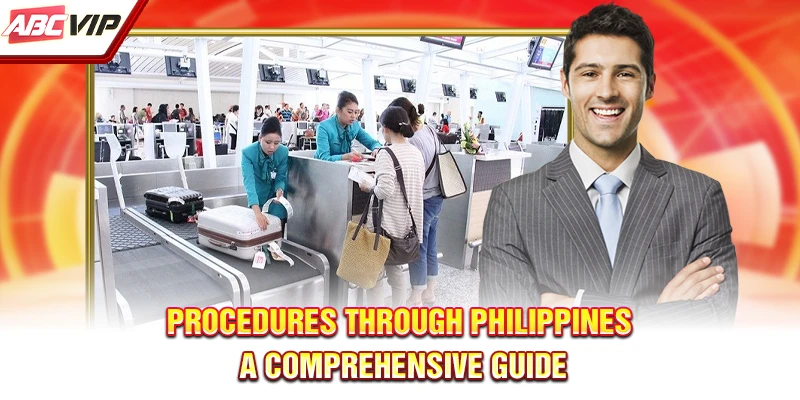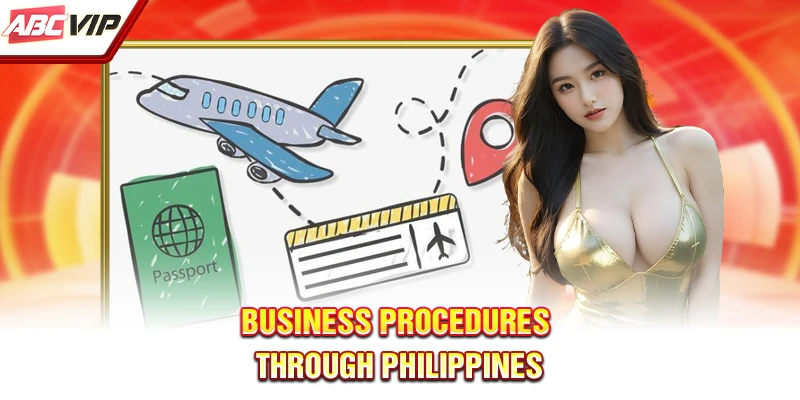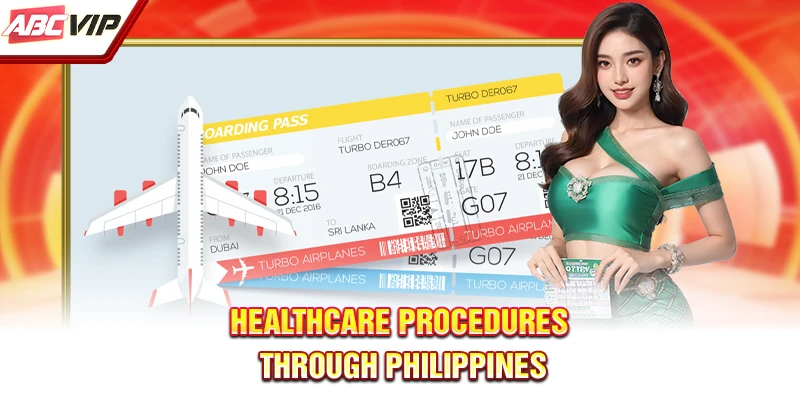Procedures through Philippines are essential to ensure a smooth journey, whether you’re visiting for tourism, relocating for work or starting a business. This guide of ABCVIP explores the necessary steps for travel, immigration and official processes, helping you navigate seamlessly through this archipelagic nation.
Travel procedures through Philippines
Traveling to the Philippines requires careful preparation to avoid complications.
Visa requirements
Before entering the Philippines, check if your nationality qualifies for visa-free entry. Citizens of over 150 countries can enter visa-free for up to 30 days, provided they meet these requirements:
- To ensure smooth entry into your destination, travelers must possess a travel document with a validity period extending at least six months beyond their planned departure date.
- Having proof of a confirmed flight, either for returning home or continuing to another destination, is a crucial requirement.
For stays longer than 30 days, you’ll need to apply for a tourist visa at a Philippine embassy or consulate. Certain documents are commonly required to complete the process:
- A fully filled-out application form, ensuring all details are accurately provided.
- A recent photograph meeting specific size standards
- Proof of financial capability (e.g., bank statements).
- Proof of travel plans, including a confirmed ticket for your return or onward journey.
Other visa types, including work visas, student visas, and retirement visas, may require additional documentation.

Arrival procedures
Upon arrival in the Philippines, travelers must go through immigration and customs. Here is what to expect:
- Immigration clearance: Present your passport, visa (if applicable), and a completed arrival card.
- Customs declaration: Declare any restricted items or cash exceeding PHP 50,000 or foreign currencies over $10,000.
- Health protocols: Depending on the current situation, you may need to present vaccination certificates or undergo health screenings.
To ensure smooth entry, always check the latest travel advisories and requirements before your trip.
Immigration procedures
Navigating the immigration system is a key part of the procedures through Philippines, especially for long-term visitors or expats.
Visa extensions
Tourists who wish to stay longer than 30 days can apply for a visa extension at the Bureau of Immigration (BI). The process involves:
- Filling out the visa extension application form, ensuring all details are accurately provided.
- Submitting your passport and paying the extension fee.
- Receiving a new visa stamp.
Work permits and residency
If you plan to work or reside in the Philippines, you’ll need the appropriate permits:
- Alien employment permit (AEP): Issued by the Department of Labor & Employment (DOLE), this is mandatory for foreigners seeking employment.
- Special resident retiree’s visa (SRRV): Best for retirees aged 35 and above, this visa provides permanent residency and multiple-entry privileges.
- 13A immigrant visa: Available for foreigners married to Filipino citizens, this visa allows permanent residency.
Understanding these immigration procedures will make your transition to living and working in the Philippines much easier.
Business procedures through Philippines
The Philippines is a growing hub for entrepreneurs and investors. If you’re planning to start a business, follow these steps:
Registering a business
Registering a business in the Philippines may seem complex at first, but with the right steps and preparation, the process becomes manageable. Here’s a detailed breakdown of what you need to do to legally establish and operate your business in the country:
- Step 1 – Select a business structure: Choose between sole proprietorship, partnership, or corporation.
- Step 2 – Secure registration for your business name: For individuals operating as sole proprietors, the appropriate authority to process your business name registration is the Department of Trade and Industry (DTI). On the other hand, if you are establishing a corporation or a partnership, the Securities and Exchange Commission (SEC) will handle your registration requirements. Ensuring the correct registration pathway is vital for compliance and legitimacy.
- Step 3 – Secure local permits: Obtain a mayor’s permit and barangay clearance from the local government unit where your business will operate.
- Step 4 – Register with the Bureau of Internal Revenue (BIR): Secure a Tax Identification Number (TIN) and comply with tax regulations.
For foreign investors, compliance with the Foreign Investments Act (FIA) is essential. This act details the industries open to foreign ownership and investment restrictions.

Import and export procedures
For businesses involved in trade, the procedures through Philippines for import and export are as follows:
- Register with the Bureau of Customs (BOC): Acquire a Client Profile Registration System (CPRS) certification.
- Apply for accreditation: Secure an Importer’s or Exporter’s Accreditation from the BIR and the BOC.
- Follow customs regulations: Declare goods accurately, pay applicable duties, and comply with inspection protocols.
The Philippines also promotes its Electronic-to-Mobile (E2M) system to streamline customs transactions.
Healthcare procedures through Philippines
The Philippines offers both public and private healthcare services. Here’s what you need to know:
Getting health insurance
The Philippine Health Insurance Corporation provides basic health coverage for residents, including expats with valid work or residency permits. For more comprehensive coverage, private health insurance plans are widely available.
Hospital admissions
In case of emergencies, follow these steps for hospital admission:
- Individuals must provide an official identification document, such as a government-issued ID or a passport.
- Evidence confirming active health insurance coverage is required to ensure compliance with the applicable regulations.
- Pay a deposit (required by most private hospitals).
While public hospitals are more affordable, private hospitals usually offer better facilities and shorter waiting times.

Practical tips for navigating the procedures in the Philippines
Navigating the procedures through Philippines can be easier if you keep these tips in mind:
- Prepare documents in advance: Ensure all required forms and documents are complete to avoid delays.
- Understand local customs: Patience is key, as processes may take longer than expected.
- Use online platforms: Many government services, such as visa processing and business registration, now have online systems for faster transactions.
- Learn basic tagalog: While English is widely spoken, knowing a few local phrases can help in certain situations.
Future developments
The Philippine government is continuously working to improve its systems, making it easier for locals and foreigners to navigate the procedures through Philippines. Initiatives such as online visa applications and electronic customs systems are part of the country’s efforts to modernize its processes.
Conclusion
Procedures through Philippines may seem overwhelming at first, but with the preparation and knowledge, it can be a smooth experience. Whether you’re traveling for leisure, relocating for work or starting a business, following this guide of ABCVIP will save you time and effort. From visa applications to business registration and healthcare, the Philippines offers a range of systems designed to accommodate both locals and foreigners. By understanding these procedures, you’ll be well-prepared to enjoy everything this beautiful country has to offer.




